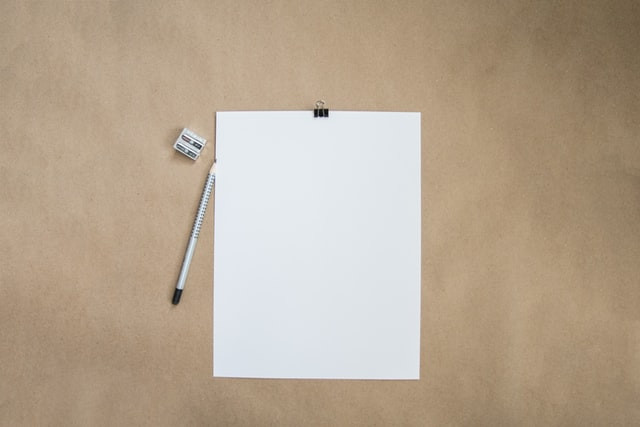
9 min
0
10.04.2022

To understand the Turabian format, we are going to dive into details. It is often said that visual stuff coveys more than plain boring text; well that is true! You will find it much easier to edit your work if you split your window in half and start looking at the pictures. Try to make changes as shown in the images below. Always move in steps in that way you will not miss out on any point. This is because the formatting is not just about setting font and justifying the text.
Turabian Sample Paper An Introduction
Before we proceed towards the paper's specific sections, we must take a moment to understand what a Turabian style is. It was developed by Kate Turabian, who was a dissertation secretary at the University of Chicago. This style of formatting is based on the Chicago style of writing. It is used mainly for history papers and occasionally for other disciplines. Though, this style is somewhat a copy of the Chicago style. Kate Turabian made a few modifications to it. This was done because she wanted to narrow down the focus to paper writing. Due to this, a little bit of information was omitted from it.
When To Use It?
As it is the simpler version of the Chicago style of formatting, it is mostly meant for students. They can use it to write materials that are not going to be published anywhere. Scholars use the former style for publishing research papers. Turabian guide is much shorter than the Chicago one. It includes rules related to formatting and citations. Despite these narrow differences, both are considered to be the Chicago formatting styles.
Purpose Of Turabian Style
It is always important to cite a source when you quote someone's work in your Turabian writing. There are several guides available that you can follow. Your choice will always depend on the institution's preferences that you belong to or the journal to which you will be sending your work. This style is mostly used by students who will not be publishing their work. This is why this style is more straightforward than the other sophisticated ones such as the Chicago, APA, and Harvard. This style also allows the mixing of different formats. In this way, the result will be evident and consistent.
Major Paper Sections
After discussing what a Turabian style is and when it will be used, let's move towards the major paper sections. We will now discuss the format in great detail. Suppose you are currently working on the formatting of a paper. Try to follow all of these points in a sequence so that you can save some time. By the time you reach the end of this article, you will be done with your paper formatting. Now that is a win-win!
Title Page
All of the class papers begin with a title page. Do not skip this point under any condition in your Turabian writing. It is because no one will ever know the topic of your paper. Even though your piece of writing will not get published, it still needs to stay professional. Always place the title at the center or a third of the way down of your first page. If you have a subtitle, too, then put a colon after your title. Write your subtitle in the next line. Do not forget to add line space between the title and the subtitle. After the space of several lines, type your name, course title, date, and any other information that your instructor has asked you to include.
Main Body
Coming towards the main text of Turabian style. It would be best if you started a paragraph by indenting it by ½ inches. The font size should be kept 12 pt. Font style must always be one of the three, that is Times new roman, Calibri, or Arial. Try to keep the Arial font at the size of 11. This is because some of the fonts tend to appear larger. Always keep the text double spaced and leave the right margin ragged. If you are using quotations in the middle of the text, then keep the entire chunk as a block and indent it by ½ inches. Do not double space the quotation. When you are finished with the quotation, leave a blank line gap and start with the next heading. Put a single space between the sentences, not two. You must keep the entire format consistent throughout the paper. Try to check each paragraph after you are done writing the paper.
References
Next, we move to the references or the reference list in the Turabian writing. Most of the time it will be called "works cited". Always write the title of "reference list" at the top of the page. It should be centered. Then add two blank lines. After that, you can start with the works that you have quoted in your writing. Apply ½ inch indents for each entry that you make. Note that the indents must be "hanging". There should be a single line space between each word that you have stated. Leave the right margin ragged. Do not justify the text as much as we all want it. In case you have quoted works from the same author, you can use a "3-em dash". Just state the first work that includes the name of the author. Then leave a blank line. After that, replace the author's name with a 3-em dash and continue with the working title. More information and examples about how to quote a source in an essays you can find here: https://studybay.com/blog/how-to-cite-sources-in-an-essay/.
Footnotes
When attempting to write in Turabian style, always place the footnotes at the end of the page. Use a "superscript" in the main text to number a word and include that number in the footnotes.
Always indent the first line of the footnote by ½ inches, just like you did in the paragraphs. Try to use regular or preferably smaller text. In this way, your page will look professional, and the reader will notice the footnotes. For the "note numbers", keep the text normal and give a space after it. Give a single line space between each note using a blank line. Just like the references, keep the right margin ragged. You will find the option to add footnotes in the reference tab.
Headings
This section will brief you about when to use headings, chapters, or subheadings. Starting from the headings. These help you to divide your work into a logical sequence or "mini-papers". It will be easier for the reader to grasp all of the points you are making in your work. As for the subheadings, they are used to categorize your paper further. In this way, the reader will create a mind map and will be able to understand better what goes under which heading.
The chapter number should be at the center of the page. It should be kept in bold. Then leave a space of black lines and type the subtitle. Always separate the subtitle from the chapter heading by a colon. Then give a space of two blank lines and start with the paragraph.
Restrain yourself from adding a period after the heading ends. Below are the formatting levels for the headings in Turabian writing:
- Level 1: keep it at the center of the page, bold it and select the headline capitalization style.
- Level 2: keep it at the center of the page, the font should be regular, and select the headline capitalization style.
- Level 3: Keep it on the flush left. You can either choose to bold it or italicize it. Select the headline-style capitalization.
- Level 4: keep it on the flush left and choose the regular font size. Select the sentence-style capitalization.
- Level 5: run-in at the start of your paragraph. You can either choose to keep it in bold or italicize it. Choose the sentence-style capitalization.
Turabian General Format
After we have discussed the paper sections, we will now move towards the Turabian style's general format. This will cover important points related to grammar, formatting, citations, line spacing, margins, and page numbers. You can never miss out on these points as they are equally important as the paper sections are.
If you do not want to look at this in a strictly academic way, then try looking at it from a different angle. These are the points that will add oomph to your writing. The content will be much more readable and professional. Even if you are not a pro at writing papers, you can easily nail them by following these formatting steps. Just be patient as I know that it’s a lot!
Turabian Paper Example - Grammar Rules to follow
There are some basic grammar rules that you must always remember:
- An Oxford comma: This is placed after the second-to-last item in a list.
- Single space between sentences: Previously, all of the sentences had double spaces in between them. This practice is obsolete today. Always use only a single space.
- Capitalization after the use of colons: If a colon is used in the middle of the sentence and a quotation follows then you must capitalize on the first word. Otherwise, don’t do it.
Citations
It is crucial to add references at the end of the paper, but it is equally essential to put in-text citations. A Turabian citation is placed immediately after the quote or the material that is used by someone else. It must include the name of the author, the year, and a locator for specific passages. Never forget to write the citation in brackets. Use a comma to separate the date and the locator.
Do not put punctuation between the author's name and date. Do not use a period between the quote and the citation. Make sure that the date you are stating matches the date you have stated in the references. You can use online websites that can generate a Chicago style citation for you. They will also provide you with references. This will save you the hassle of typing everything manually. It will also reduce the chances of errors in your work.
Line Spacing And Margins
As discussed before, the lines should always be double spaced. It would be best if you used one-inch margins on all of the four dimensions of the page, the top, bottom, left, and right. The quotations that exceed five lines are known as block quotations. There should not be any line space in between them. All of such quotations must be indented by ½ inches.
Page Numbers
Never forget to number your pages, including the reference page. This will save the reader time to go through all of the work to find a specific section. The numbering is a little different for the first page and the rest of them.
The first page will be numbered at the bottom. It should be centered. For the subsequent pages, the number will be placed in the upper right-hand corner.



